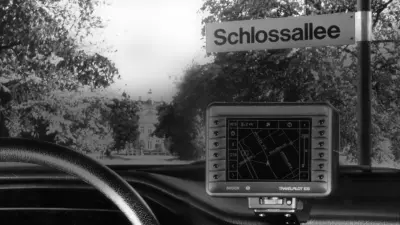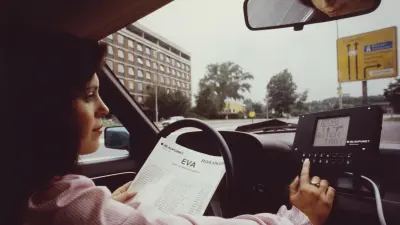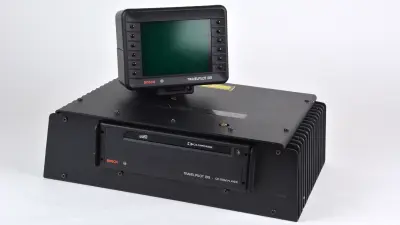Next right, please! Bosch car navigation

Even half a century ago, there were numerous researchers working on the dream of navigation guidance for road traffic.
They weren’t thinking so much about an autopilot — that is yet to come – but rather a kind of guide that could help drivers make their way through unfamiliar or completely unknown cities and areas.
More than 25 years ago, on August 23, 1989, Bosch offered an insight into what the future could hold for navigation.
Off the freeway and then?
The first idea for an electronic system designed to help the flow of traffic had been completely different. It was based on metal induction loops installed in the freeway. Too many cars passing over these loops in a certain space of time would indicate that a traffic jam could be forming.
Any car fitted with a compatible receiver would then be advised to leave the freeway. Bosch tested the system on several sections of freeway in Germany in the late-1970s. However, what were drivers leaving the freeway to do if they didn’t have a map with them?

Loading the video requires your consent. If you agree by clicking on the Play icon, the video will load and data will be transmitted to Google as well as information will be accessed and stored by Google on your device. Google may be able to link these data or information with existing data.
EVA knows the way

The answer that Bosch came up with was the first prototype of “EVA” (electronic pilot for drivers), unveiled in September 1983. Using an electronic map, EVA was able to guide drivers from place to place. A voice told them how to proceed step by step, but without the storage media we have today. The magnetic cassette tape could only hold the digital map for a medium-sized city.
In 1989, the TravelPilot IDS navigation system was launched as the first cautious step towards series production. Using a digitally saved map, starting and destination coordinates entered by the driver, and wheel sensors, it gave drivers information about where they were. Unfortunately, voice output and route guidance that demanded extensive computing performance still could not be delivered in an affordable package. In the end, that drawback denied the TravelPilot IDS its chances of success.
Success and standards

Bosch made the decisive breakthrough for commercial success in 1995, thanks to the TravelPilot RG 05 with satellite navigation, route guidance, and voice output. The system is also known as “turn-by-turn” navigation — when drivers take a turn, the next voice command is issued, guiding them step-by-step to their destination. What EVA had proven possible was now also more affordable — even if it was still an expensive add-on for luxury models. However, the RG 05 kicked off the success story of navigation systems, which have come so far that we can now buy them from any discount store or app store – at an affordable price.
Author: Dietrich Kuhlgatz
